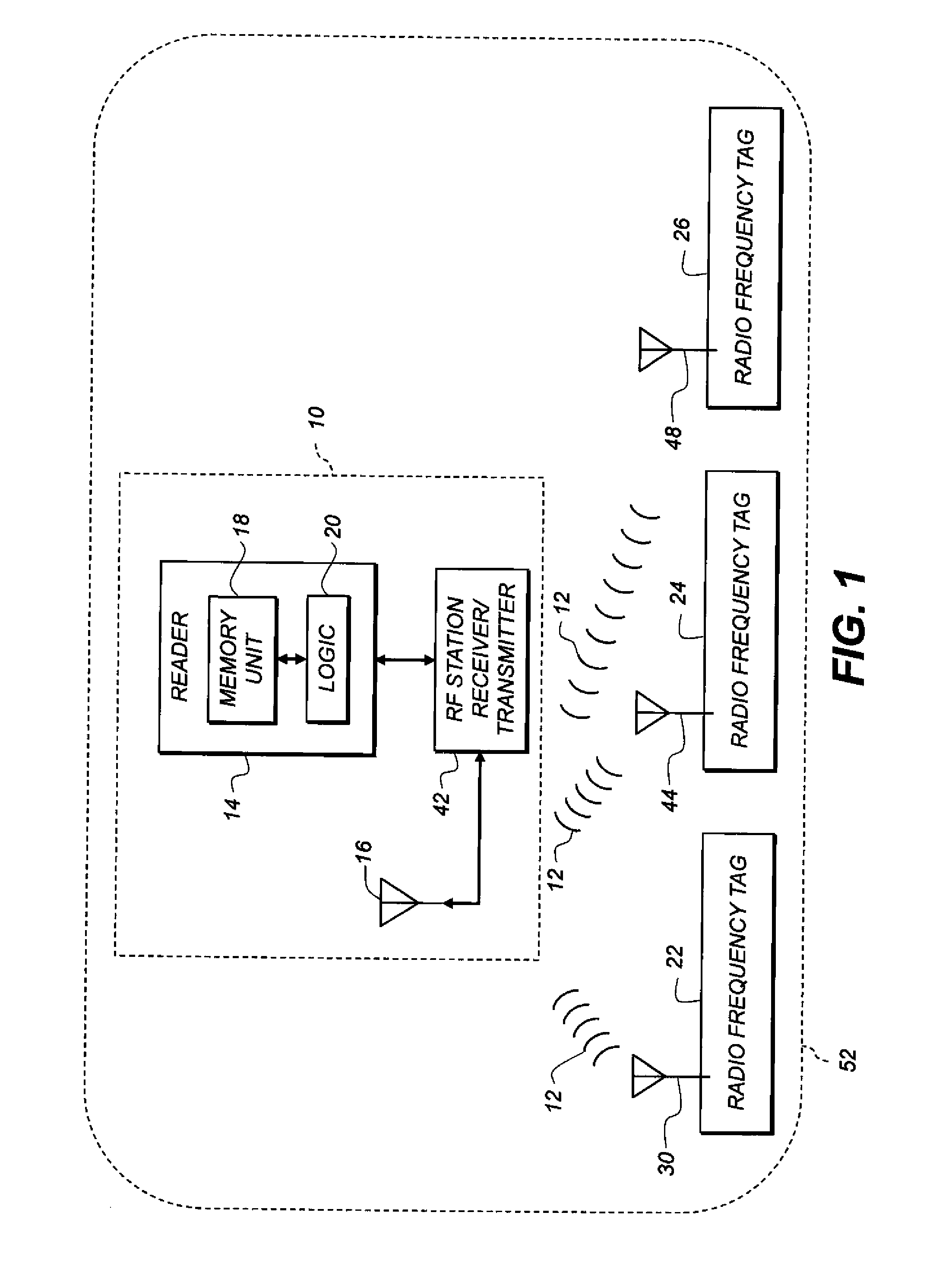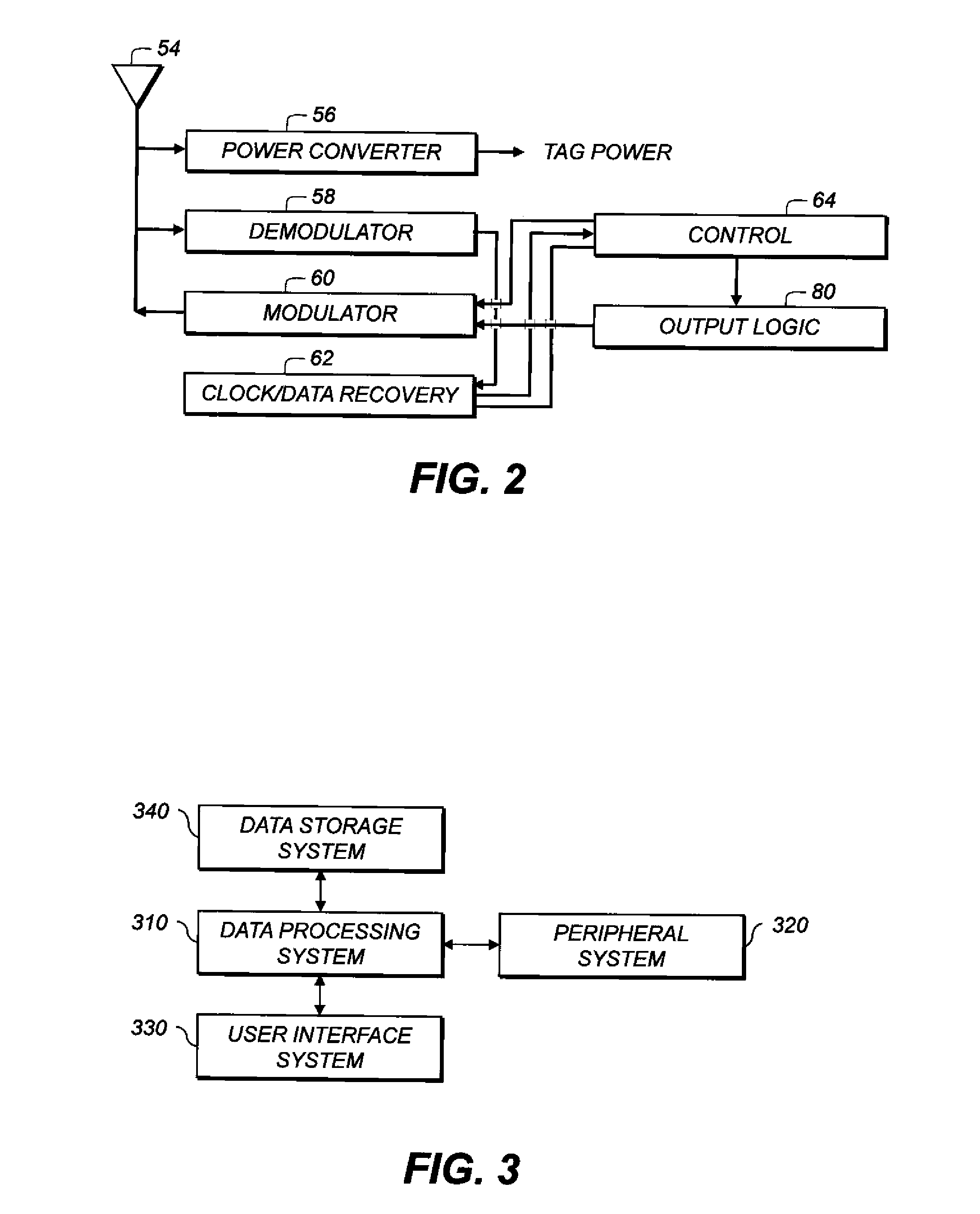Container-classification identification using directional-antenna RFID
a technology of directional antenna and container classification, which is applied in the field of radiofrequency communication between radiofrequency identification (rfid) tags and rfid readers, and can solve problems such as the inability to skim all of the data for packages successfully
- Summary
- Abstract
- Description
- Claims
- Application Information
AI Technical Summary
Benefits of technology
Problems solved by technology
Method used
Image
Examples
Embodiment Construction
[0023]In this disclosure, the term “classification” refers to any information specific to a container. A container's classification can include a unique ID number of the container or its contents; information about container ownership (owner, lessee); or an indication of what kind of container it is, what size it is (dimensions or volume), or what its mechanical properties are (e.g., its strength or maximum gross weight). Other items for which a container has particular values (e.g., paint color) can also be included in the container's classification.
[0024]In the following description, some embodiments will be described in terms that would ordinarily be implemented as software programs. Those skilled in the art will readily recognize that the equivalent of such software can also be constructed in hardware. Because image manipulation algorithms and systems are well known, the present description will be directed in particular to algorithms and systems forming part of, or cooperating ...
PUM
 Login to View More
Login to View More Abstract
Description
Claims
Application Information
 Login to View More
Login to View More - R&D
- Intellectual Property
- Life Sciences
- Materials
- Tech Scout
- Unparalleled Data Quality
- Higher Quality Content
- 60% Fewer Hallucinations
Browse by: Latest US Patents, China's latest patents, Technical Efficacy Thesaurus, Application Domain, Technology Topic, Popular Technical Reports.
© 2025 PatSnap. All rights reserved.Legal|Privacy policy|Modern Slavery Act Transparency Statement|Sitemap|About US| Contact US: help@patsnap.com



